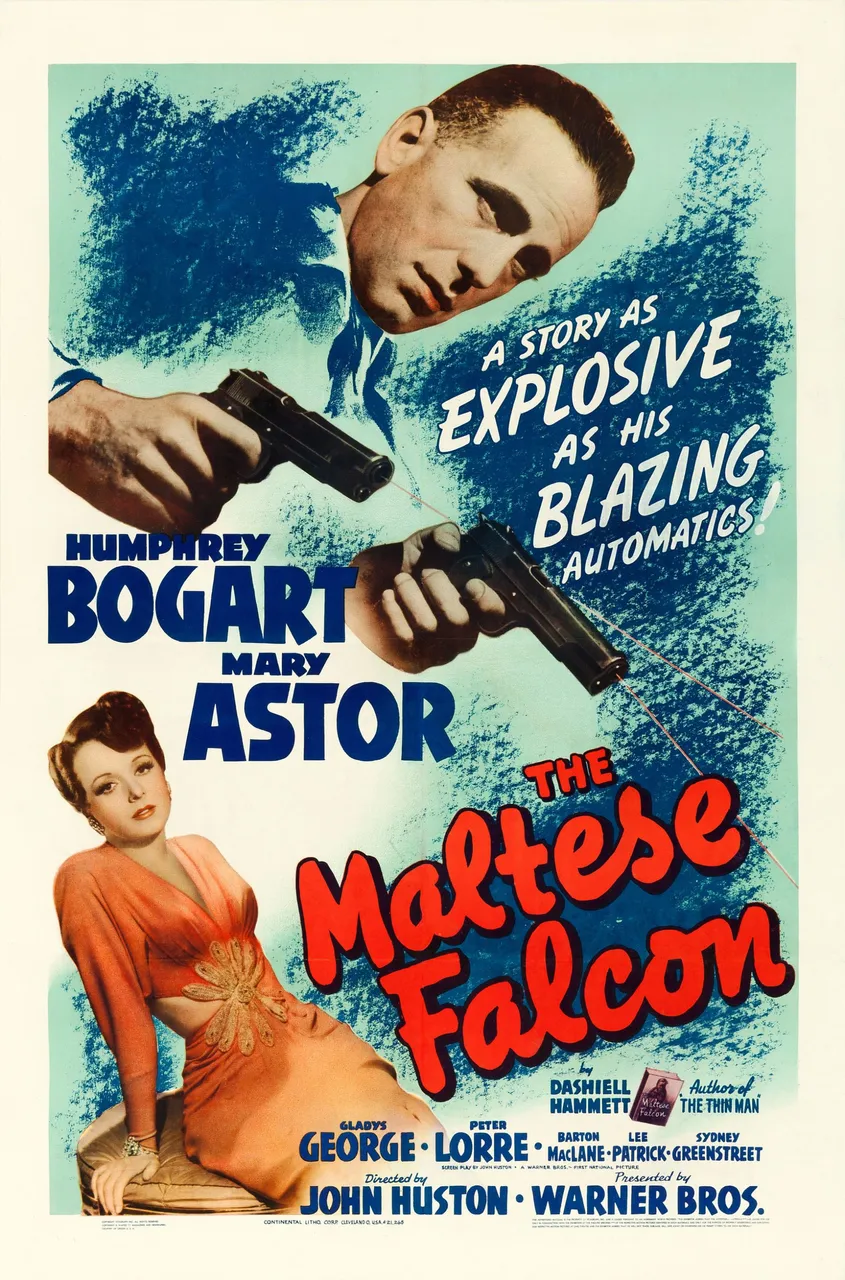
The Maltese Falcon is a 1941 American film noir directed by John Huston and based on the 1930 novel of the same name by Dashiell Hammett. The movie features Humphrey Bogart in the role of hardboiled detective Sam Spade, who becomes embroiled in a case involving three eccentric criminals and their quest for a priceless statuette. The film is known for its tough and gritty nature, brilliant cast, and its influence on the film noir genre. If you are a fan of film noir or mysteries, The Maltese Falcon is highly recommended as a must-see.
Plot
The Maltese Falcon is a 1941 American film noir directed by John Huston, based on the 1930 novel of the same name by Dashiell Hammett. The plot revolves around private detective Sam Spade (played by Humphrey Bogart) who takes on a case involving three eccentric criminals and their quest for a priceless statuette. The main plot points include:
- Sam Spade, a private detective, is hired by a mysterious lady, Miss Wonderly (played by Mary Astor), to find her sister, Arlene Mayer (played by Gertrude Blanch).
- As Spade investigates the case, he becomes involved with three eccentric criminals: the fat man, the little man, and the tall man, who are also looking for the statuette.
- The film's iconic final scene features Spade revealing the truth to Miss Wonderly, with the help of a Maltese Falcon statuette.
Trailer
Cast
- Humphrey Bogart as Samuel 'Sam' Spade
- Mary Astor as Brigid O'Shaughnessy/Miss Wonderly/Miss LeBlanc
- Gladys George as Iva Archer
- Peter Lorre as Joel Cairo
- Barton MacLane as Detective Lieutenant Dundy
- Lee Patrick as Effie Perine
- Sydney Greenstreet as Kasper Gutman
- Ward Bond as Detective Sergeant Tom Polhaus
- Jerome Cowan as Miles Archer
- Elisha Cook Jr. as Wilmer Cook
- James Burke as Luke, House Detective
- Hotel Belvedere as Frank Richman, Driver
- John Hamilton as District Attorney Bryan
- Charles Drake as Reporter (uncredited)
- Chester Gan as Bit Part (uncredited)
- Creighton Hale as Stenographer (uncredited)
- Robert Homans as Policeman (uncredited)
- William Hopper as Reporter (uncredited)
- Walter Huston as Captain Jacoby (uncredited)
Director: John Huston
Writer: Dashiell Hammett, John Huston
Box Office Gross: $34,691
Distributor: Warner Bros. Pictures
Release Date (Theaters): Oct 18, 1941
Release Date (Streaming): May 19, 2016
Theme
The theme of The Maltese Falcon revolves around the struggle between good and evil, as well as the concept of justice and the consequences of one's actions. The film explores the idea that sometimes the ends justify the means and that justice can be served even if it involves breaking the law.
Reception
The Maltese Falcon was well-received by both critics and audiences, earning a 100% Tomatometer rating based on 25 reviews. The film is considered a classic and influential example of the film noir genre.
Production Challenges
During the production of "The Maltese Falcon," there were no significant challenges reported. The film was shot on the traditional studio backlot, and the production team was able to achieve the desired visual style and staging.
Settings
The film is set in San Francisco, specifically the Tenderloin district, which is known for its seedy and criminal elements. The movie's iconic final scene takes place in a dramatic fog-filled room, adding to the overall atmosphere and ambiance of the film.
Visual Styles
The Maltese Falcon features a distinctive visual style, with high contrast lighting, sharp shadows, and dramatic camera angles. The film's cinematography, by Arthur Edeson, contributes to the overall film noir atmosphere. Additionally, the film's use of traditional studio backlot staging and lighting further enhances the visual style.
Techniques
The film employs various techniques to create its distinctive film noir atmosphere, including:
- High contrast lighting, with sharp shadows and dramatic camera angles
- Unusual camera angles and shots, such as the famous final scene with the Maltese Falcon statuette
- Film noir's characteristic voice-over narration, which helps to guide the audience through the story and provide insight into the character's thoughts and emotions
Trivia
- The film's iconic final scene, with the Maltese Falcon statuette, was improvised by Humphrey Bogart during the shooting.
- The film was the first of three film noir classics directed by John Huston, with the others being "Key Largo" (1941) and "Treasure Island" (1942).
Fun Facts
- The film's production designer, Bertram Granger, won an Academy Award for his work on The Maltese Falcon.
- The film's editor, Robert Parrish, also worked on other classic films such as "The Godfather" and "Raging Bull".
- The film's composer, Orson Welles, was originally considered for the role of Sam Spade before Humphrey Bogart was cast.
